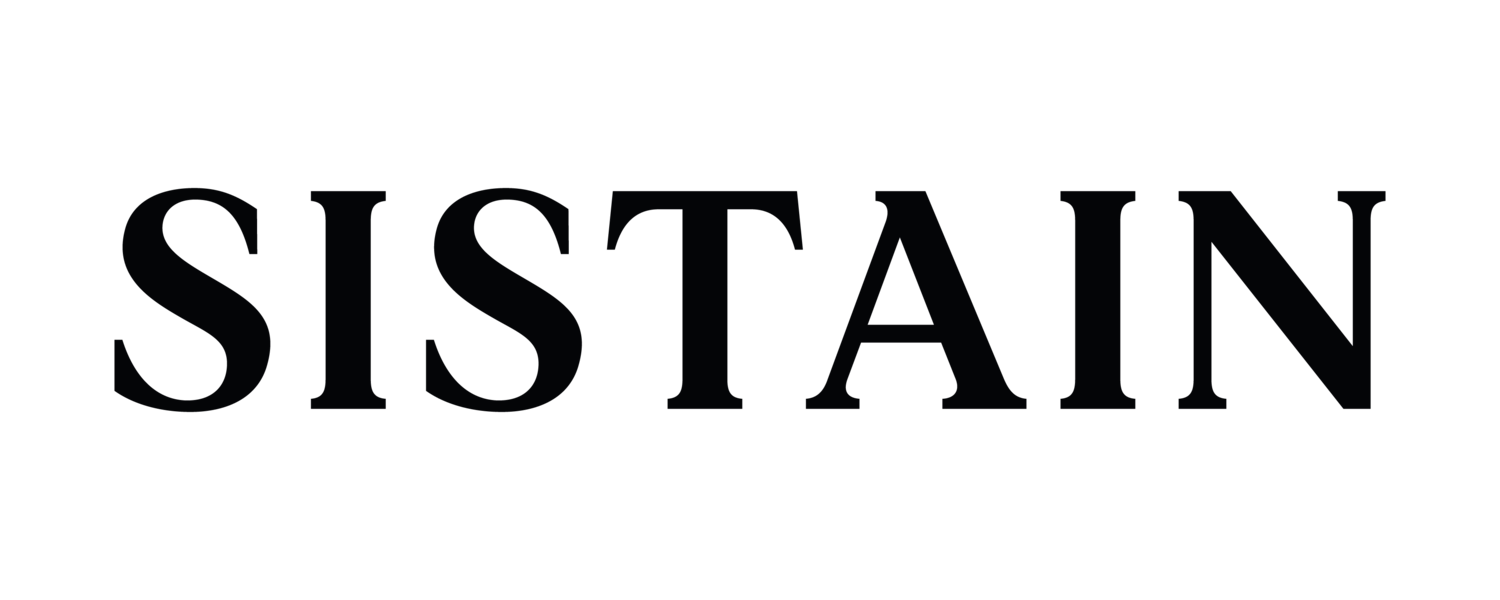What is Clean, Sustainable Beauty?
By SISTAIN
The clean beauty revolution is rapidly reshaping the beauty industry, one which heavily relies on plastic and unregulated chemicals. And the spotlight is shining ever brighter as more consumers learn about harmful ingredients that are in their everyday products, and the negative effects that packaging is having on our planet.
Unfortunately, the beauty industry in the US is largely unregulated. The European Union has banned more than 1,300 chemicals from being used in beauty products while the US has only banned about 30. (2) There are multiple lawsuits currently being investigated around chemicals in beauty products. And according to the Environmental Working Group, women use an average of 12 products a day, containing 168 different chemicals. The clean beauty movement is just beginning and the demand for clean products continues to rise.
On top of that, there’s greenwashing—when a company makes a misleading claim about the environmental benefits of its products—within the “clean” and “sustainable” product categories. It has become a common marketing technique for a lot of global brands which requires extensive research for the customer to make sure they are getting the clean or natural products they were promised on the box.
SISTAIN’s Take On Clean, Sustainable Beauty
While we’ve established that ‘clean’ refers to products that take human and environmental health into consideration, which are composed mainly of natural ingredients, not all clean beauty is sustainable beauty. But the movement overall has also helped a toxic and plastic-saturated market shift towards clean, sustainable beauty. When we say plastic saturated, we are talking about the overall amount of plastic packaging in U.S. products that has been increasing at an alarming rate of over 120 times since 1960—with almost 70 percent of that waste piling up in landfills. (1) In 2017 alone, the beauty industry produced 76.8 billion plastic packaging units. (3)
Beauty brands are combating this by increasing the use of sustainable or refillable packaging. We are seeing more eco-friendly materials in beauty products such as glass (that can be recycled or repurposed in the home), recyclable and biodegradable cardboard and PET (recyclable plastic that is meant to be melted down and remade into other plastic products) or PCR plastic (PET plastic that has been melted down and remade into other plastic products).
Image Source: Kjaer Weis
Beauty Terms Defined by SISTAIN
CLEAN OR NONTOXIC
Beauty products created without suspected toxic or harmful ingredients — such as parabens, sulfate, petroleum or aluminum compounds. The product should not include any ingredient that’s been deemed toxic at any dose by a third-party resource like the European Union or Environmental Working Group.
SUSTAINABLE
Beauty products considering environmental health by choosing nontoxic ingredients and using packaging made of eco-friendly materials — such as glass, recyclable, compostable or biodegradable cardboard, PET plastic (recyclable plastic that is meant to be melted down and remade into other plastic products), and PCR plastics (PET plastic that has been melted down and remade into other plastic products).
NATURAL OR ALL NATURAL
Beauty products made of plant-based ingredients derived from nature. These ingredients can also be mixed with synthetic chemicals, or even processed into new things. The danger with the term “natural” is that legally anyone can use it. It’s an unregulated term. The Federal Trade Commission (FTC) has stated if companies are going to make the claims ‘all natural’ or ‘100 percent natural,’ they can’t use synthetic ingredients. But they don’t define what qualifies as a ‘synthetic’ ingredient.
ORGANIC
Beauty ingredients or products certified organic. Meaning the ingredients were grown on soil that had no prohibited substances applied for three years prior to harvest, according to the USDA.
It may seem small, but consuming conscious and sustainable beauty can make a large impact on the environment. With each purchase of clean and sustainable beauty, you are voting with your dollar to continue the shift to support the safe-keeping and longevity of your health and our planet.
Image Source: Ilia Beauty
Image Source: Kjaer Weis
Tips On Shopping Clean Sustainable Beauty
1. AVOID INGREDIENTS ENDING IN
Paraben
Phthalates
Sodium Laureth
Sulfate
Parfum (or Fragrance)
Carcinogens, such as Formaldehyde -- look out for:
2-bromo-2-nitropropane-1,3 diol (bronopol)
diazolidinyl urea
DMDM hydantoin
imidazolidinyl urea
sodium hydroxymethylglycinate
quaternium-15
2. LOOK FOR REPUTABLE CERTIFICATIONS
Such as b-corp, 1% for the planet, plastic negative, climate neutral, leaping bunny certified. Read more about specific certification to look for here.
3. LOOK FOR STANDARDS
Such as fragrance-free, cruelty-free, organic, hypoallergenic, and paraben-free
4. USE YOUR RESOURCES!
There are great stores that do the research for you such as GOOP, Credo Beauty, and SISTAIN.
5. FOR MORE BEAUTY BRAND SUGGESTIONS READ OUR ARTICLES
6. LOOK FOR SUSTAINABLE PACKAGING
Look for packaging made of eco-friendly materials — such as glass, recyclable, compostable or biodegradable cardboard, PET plastic (recyclable plastic that is meant to be melted down and remade into other plastic products), and PCR plastics (PET plastic that has been melted down and remade into other plastic products).
Or better yet, look for packaging that is refillable, such as Kjaer Weiss refillable palettes.
Image Source: Linne Botanicals
(1) National Geographic (2019). The beauty industry generates a lot of plastic waste. Can it change?
(2) Vox (2018). The “natural” beauty industry is on the rise because we’re scared of chemicals
(3) Euromonitor (2018). The Beauty Industry Has a Plastics Problem
https://goop.com/beauty/personal-care/clean-beauty-and-why-its-important/









